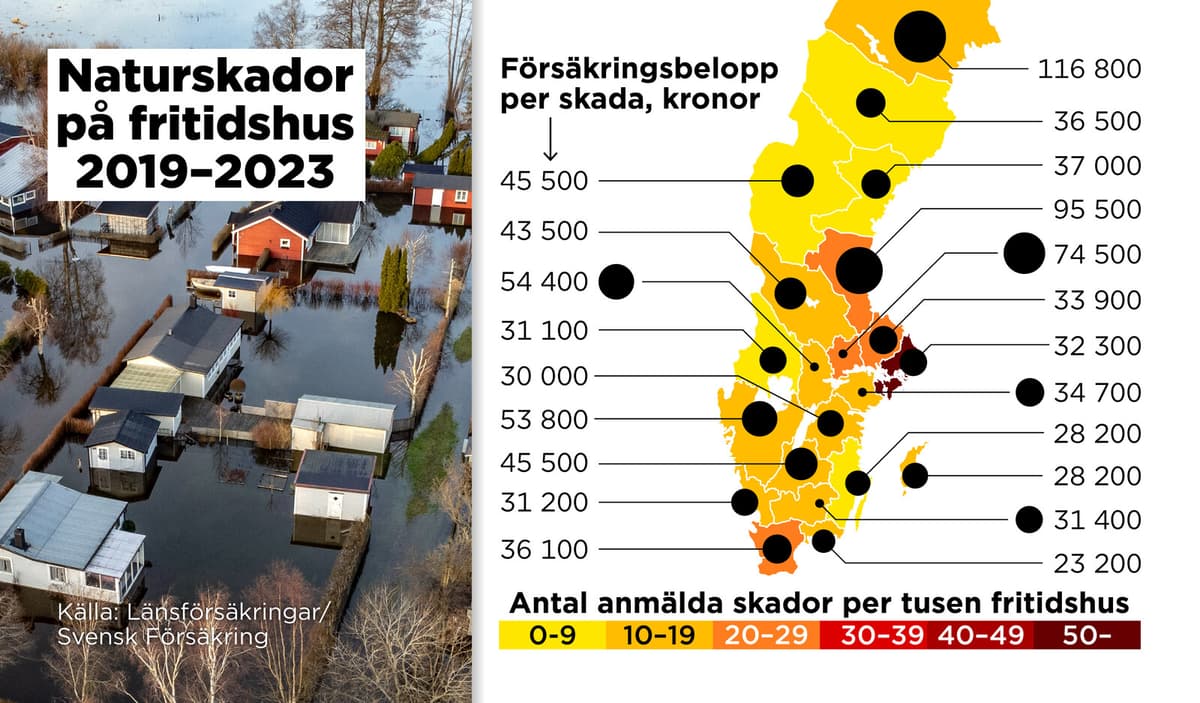When spring is in bloom, the desire for summer houses increases. But in the hunt for the perfect summer cottage, many overlook a lurking danger.
Global warming is already leading to more extreme weather such as drought, floods, and severe storms. But few speculators are aware of what the risks entail, according to Per Sangrud, sustainability manager at the real estate agent Länsförsäkringar.
The time when you could ignore taking into account the risks when buying a villa or summer house is over. Now you have to take this into consideration, he says.
It's about working preventively and trying to think about this in connection with buying a summer house.
A half billion
During the period 2019-2023, insurance companies paid out more than 500 million kronor to owners whose summer houses were damaged by natural disasters. The largest share is in Stockholm County (144 million), followed by Västra Götaland (68) and Gävleborg (56), according to statistics compiled by Länsförsäkringar.
This includes damages caused by storms.
It's about roof tiles flying off or trees falling on houses or other property, which makes it a classic natural disaster, says Sangrud and continues:
And if you look at coastal areas, there are examples where the house can be located too close to the water, which increases the risk of the house being damaged if the water levels rise,
"Great" first step
Heavy rainfall and storms can cause water levels to rise quickly, and for example, basements can flood. Forest plots can be at risk of fire if drought strikes.
He urges to contact insurance companies and ensure that the house is inspected.
The municipality and county administration have a responsibility to point out climate risks in both new and existing buildings, so checking with them I think is a great first step.
+ Against storms: Make sure that roof tiles are secured and that loose objects such as grills, outdoor furniture, and parasols are anchored or safely stored. Also, make sure you don't have trees or flagpoles that can fall on the cottage.
+ Against floods: Check the drainage, wells, vents, and sewage where water can enter. Have a drainage pump in the basement if the location is exposed. Make sure water from ditches and downspouts is led away from the house. Seal roofs, windows, and doors.
+ Against fires: Avoid flammable vegetation such as bushes and trees near the cottage. Have a water hose or pump available to moisten the area if needed.
+ Against landslides: Plant deeply rooted trees and bushes in exposed slopes, in exposed cases, soil anchors can be used. Avoid loading slopes with garden waste and parked cars.





